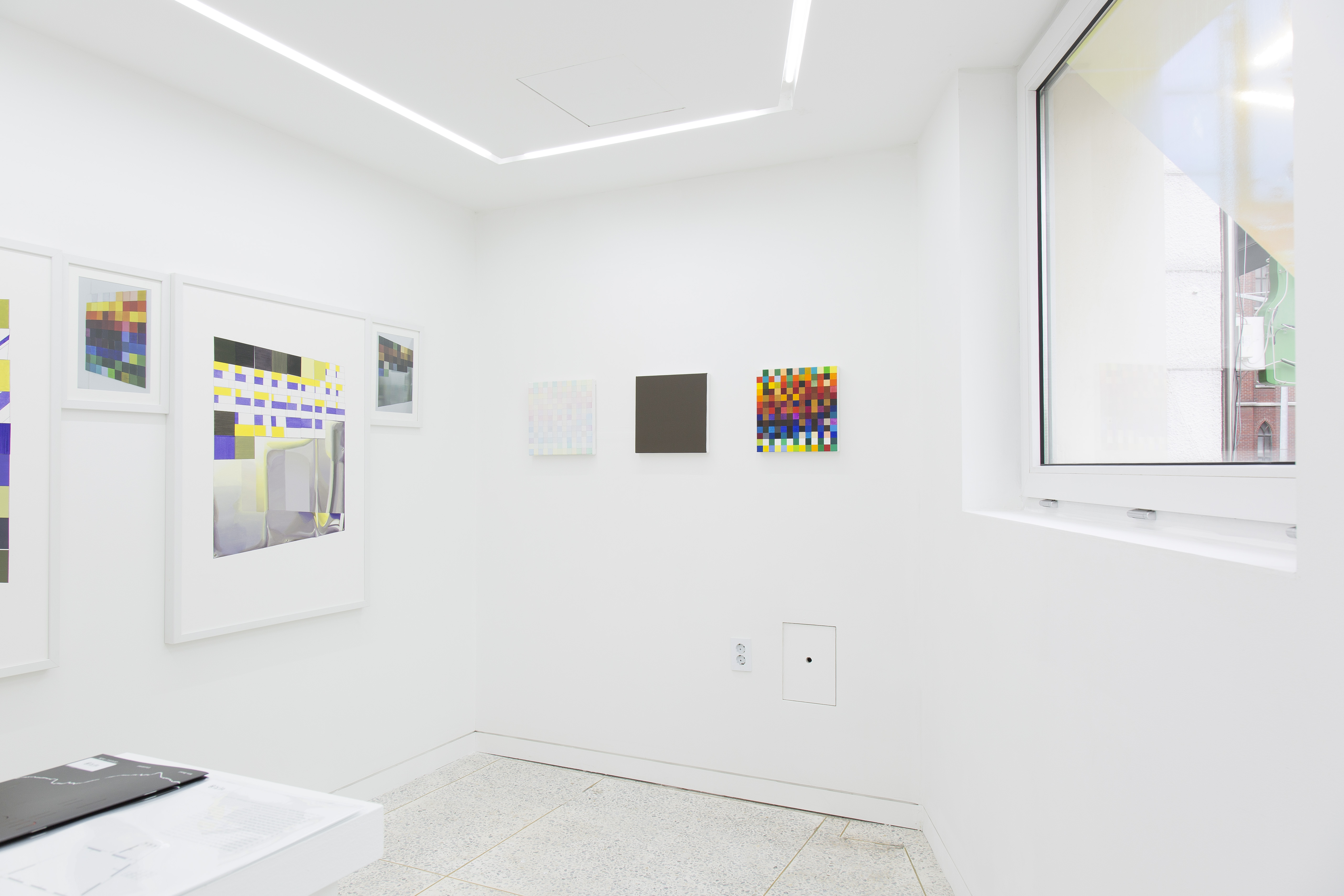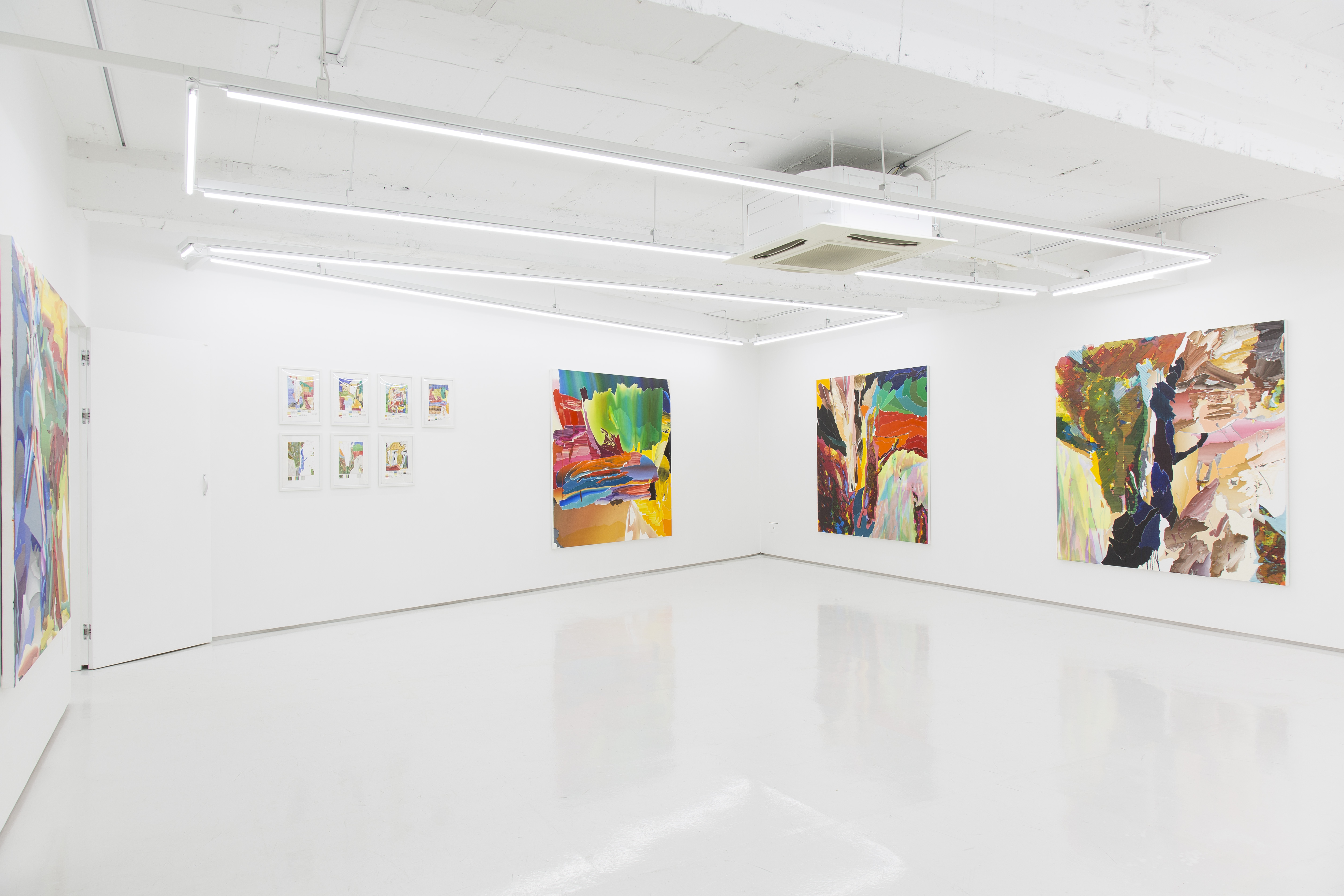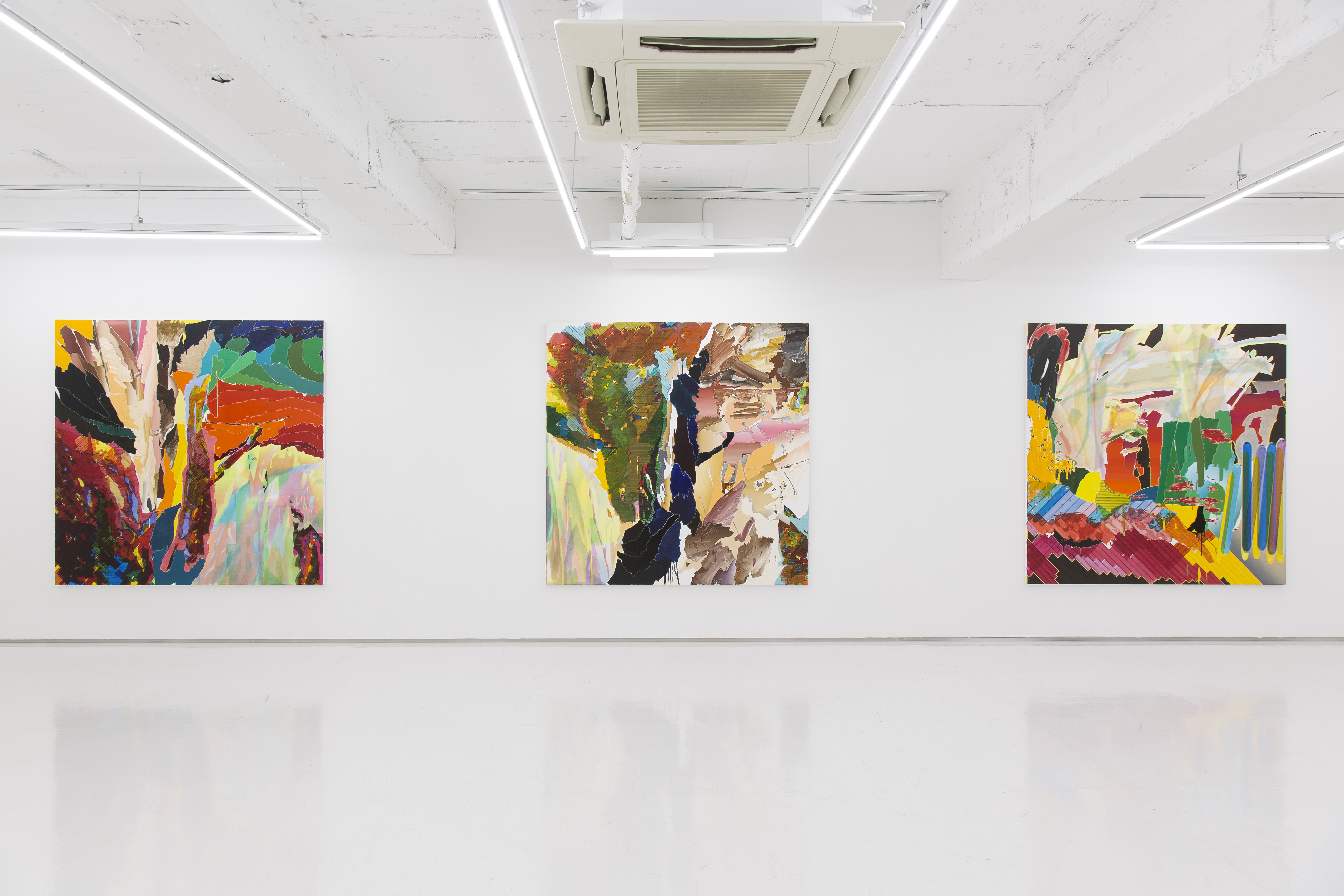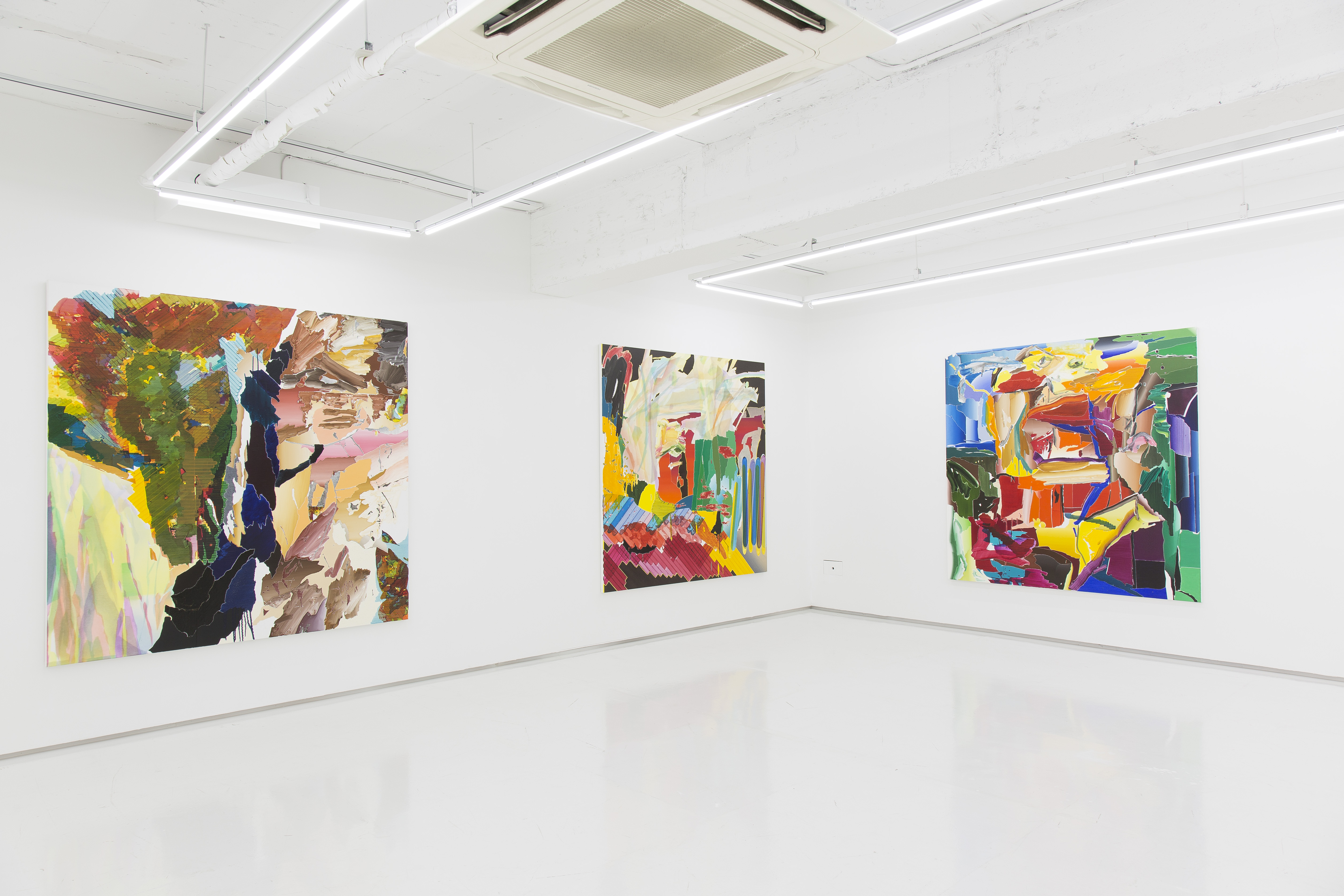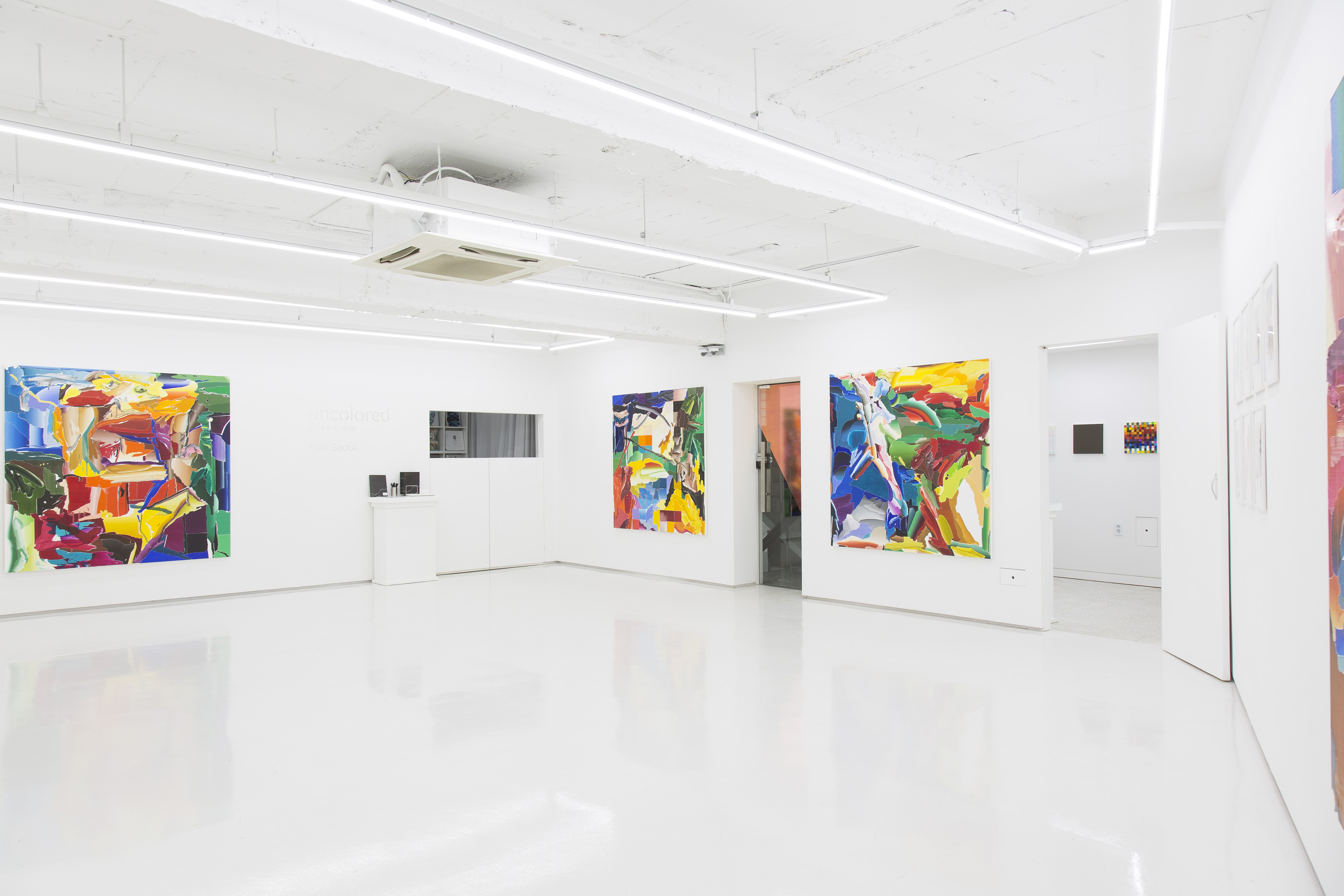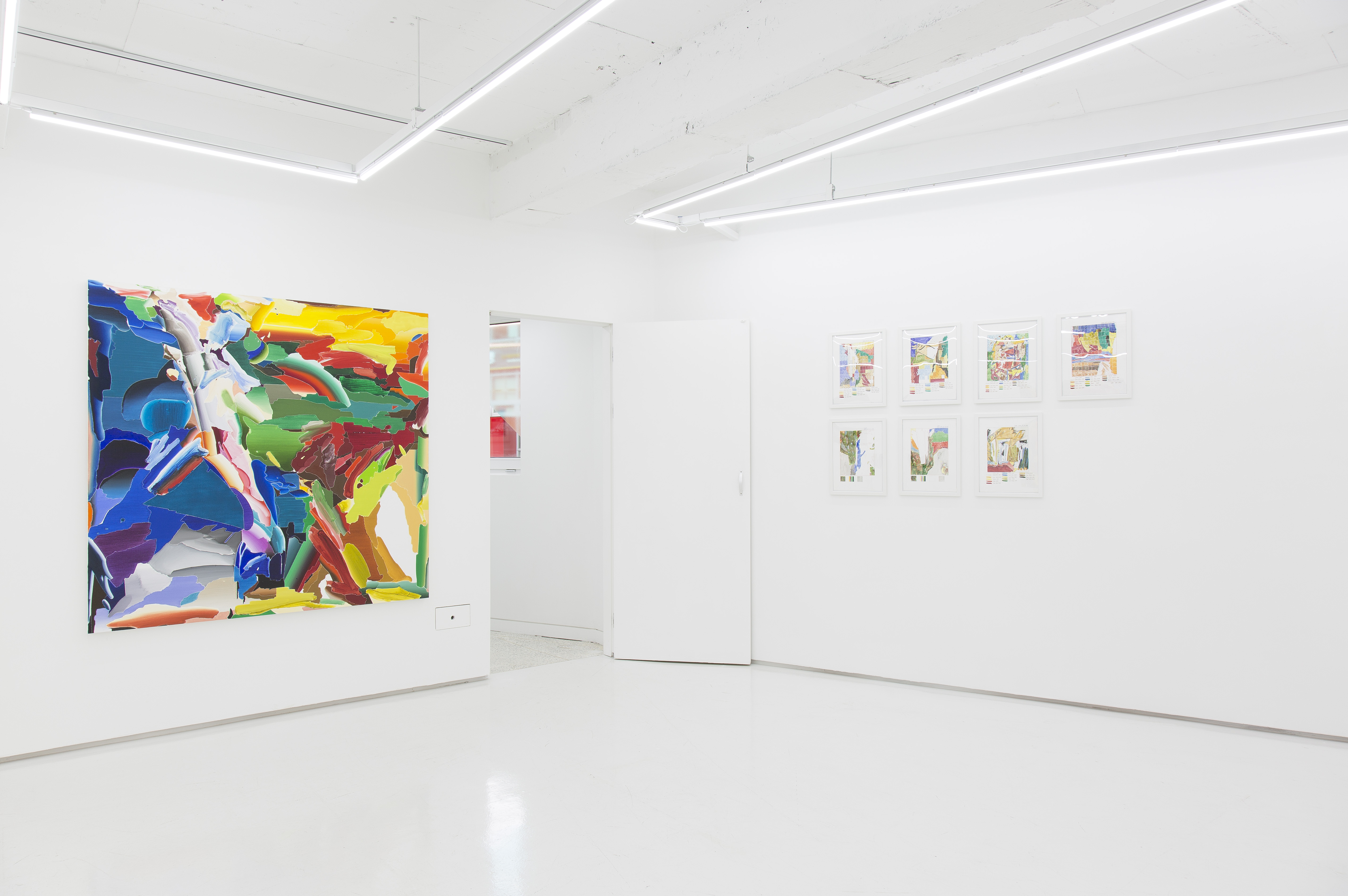Uncolored
Kim Seoul
September 5-September 28, 2019Art Delight
Hoenamu-ro 7, Yongsan-gu, Seoul
Works Exhibited
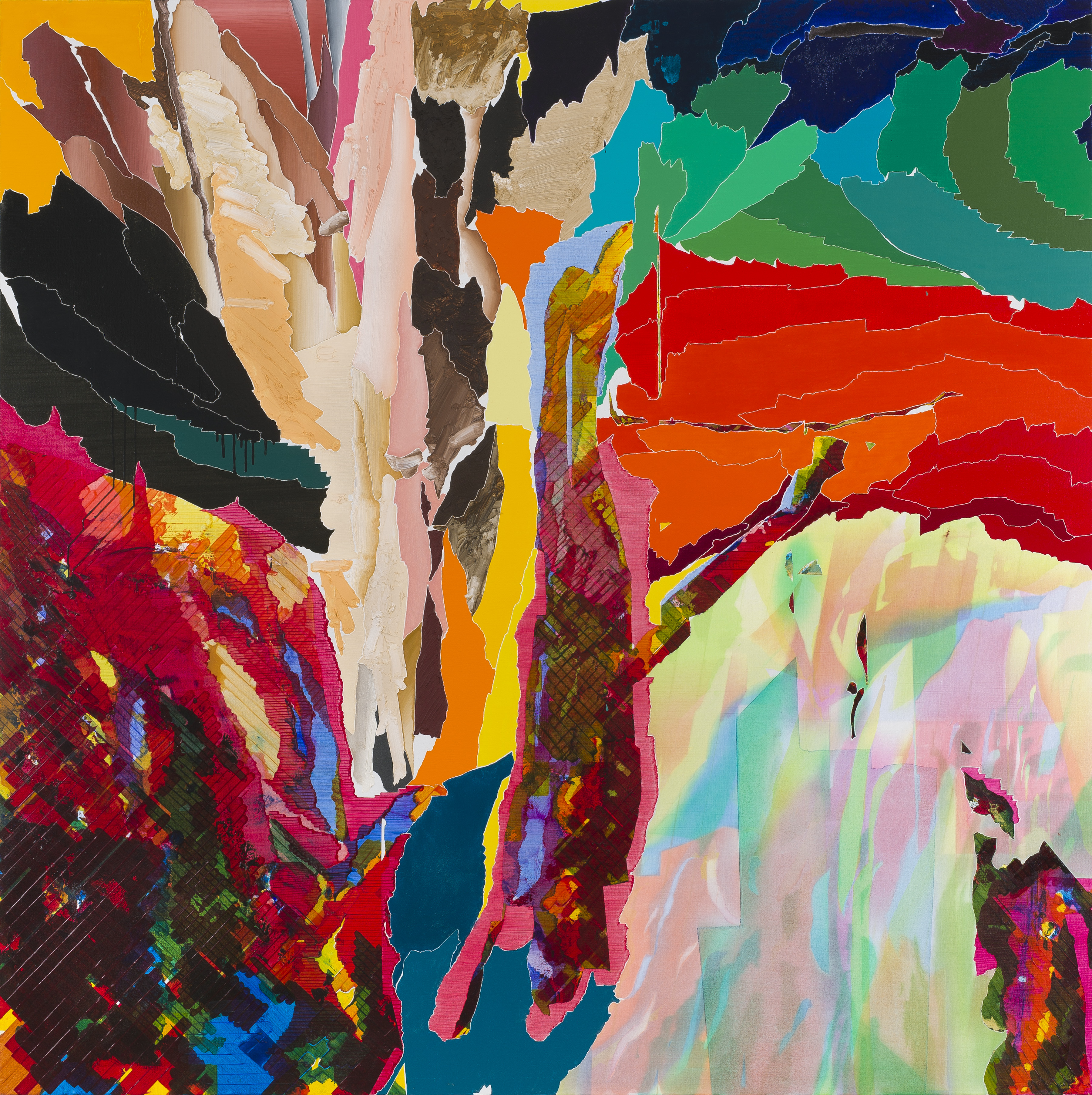
Kim Seoul, Uncolored, 2018
168 Oil Colors on Canvas, 1,720x1,720mm
Artwork ⓒ Kim Seoul, Seoul.
168 Oil Colors on Canvas, 1,720x1,720mm
Artwork ⓒ Kim Seoul, Seoul.
About
Condition-Featured Painting, Choi Jeongyoon(Independent Curator)
Abstract art, as seen throughout art history, goes beyond objective portrayal of an object and expresses a subjective emotional state, which is distinct from representational art. Although, early 20th century abstract art reflects utopian aspirations envisioned upon the ever changing world shaped by scientific and technological advancements, the experimentation on abstractionism during post-war America, which is seen as a pure art form compared to realism, showed a tendency converging to conventional aesthetics. Abstract art can further be subdivided into ‘cold abstraction’ and ‘warm abstraction,’ where the former is geometric and portrays a more rational, logical, and scientific characteristic, which can be described as typical; the latter is more expressive and focuses mainly on emotion and sentiment, which can be seen as atypical. The 〈After De Kooning〉 series, displayed in Seoul Kim’s first solo exhibition 《Uncolored》, is an interesting work, which shows glimpses that remind us of stereotypical facets that can be found in the history of modern Western abstract art, but the series also presents new forms of contemplative abstract ideas, relevant to the year 2019.
If you take a look at Kim’s art, multiple colors are spread across the surface of the canvas, and you notice that it does not depict any specific shape at first. While pondering whether or not the art is a product of impromptu emotional expression, you take one step closer and see an outline in-between colors that is formed by a small gap no wider than 1mm. While acknowledging this meaningful coincidence, it is evident that the piece was painted with moderation and planning, and not freely painted. These gaps, which resemble that of divisions for individual administrative zones on a map, divide the space of the canvas into several sections. The use of variant brush strokes are palpable as well, in which some parts are painted lightly and nearly transparent, some parts are painted with a matte thick coat, some parts are gradated or painted in multiple layers. The finished canvas is not varnished, which makes the last stroke of paint seem more vibrant and alive. What is his canvas, which has no focal point nor periphery and that is both flat and fluid, trying to convey?
Even though it is acceptable to look at a piece of artwork and be satisfied with one’s own interpretation, there are also some art that become more compelling after listening to the artist’s ideas and intentions for the piece; Kim’s artwork falls under the latter. Seoul Kim’s art at a glance seem like they portray what is called ‘warm abstraction,’ where colors are freely used; however the power of ‘reason,’ which can be seen with the usage of ‘gaps,’ is first unveiled through his cogitation in color selection. Old Holland is Netherlands’s oil paint manufacturer who makes and sells a total of 168 colors, which were all used by Seoul Kim in the making of 〈After De Kooning〉. The conditions that the artist adheres to for all his paintings is to “use all 168 colors ‘democratically,’ avoid blending, use similar amounts of each color, and create 168 fragments to fill up the canvas.” Instead of generating a textbook-like portrayal of factitious conformity and harmony, he only focused on satisfying his own conditions. Kim, who says the reason behind why he uses a 172 cm square canvas is because “it is the most efficient size to minimize the loss of fabric,” does not sugarcoat nor provide idealistic reasoning over his artwork nor his attitude.
Just like how a chef meticulously studies each ingredient’s distinct characteristic in order to bring out the ‘ingredient’s natural flavor,’ Kim purchased all the colors from Old Holland and tried each one, figuring out the oil paint’s characteristic, which took nearly over 2 years. Aside from hue, saturation, and brightness, there are other attributes that can be discovered only after testing. The artist paints in a way that best reveals the unique personality of each paint by asking himself a silly question like “if each paint could speak, what would it say?” For example, synthetic pigment is comparatively transparent, which its characteristic can be described to have a high dependency, therefore making one think that one needs to paint on multiple layers. Another example, believing the subtle difference in color between those painted with a similar hue and placed adjacent to one another becomes more prominent, Kim painted colors with a red hue on one side of the canvas.
It is possible to make hundreds and thousands of different colored paints by changing the mixing ratio of colors, but the reason why there are just 168 varieties is because paint consumers of today do not find the need for more. This color spectrum was determined by the needs of present consumers. In other words, it is noted that color varieties and its quantity are not definite, but is a product of time and societal needs. Generally, depending on personal color preference and interests, it is common for painters to become more partial towards a certain color. However, Kim, on the other hand, tries to use all 168 colors fairly as if he were a machine programmed to follow only a certain set of conditions. Kim has intentionally limited his own freedom when choosing colors. He also appropriately titled his artwork, apt with his painting methodology, by placing a serial number after the main title like ‘After De Kooning No. 1.’ His work is distinct in that each canvas does not possess any individual significance, but when the series is grouped together collectively, its overall meaning becomes accentuated.
Seoul Kim’s artwork is highly rational and stems from conceptual framework, but the way he expresses it is both emotional and liberal, which you can say has a sort of ‘charming twist.’ Aside from visual cues, the series of drawings that were also displayed, which allowed us to infer the painting process he went through, have shown clear principles that resemble a similar level to mathematical theory. For everyone, who lives in society, where he is constantly exposed to many images and different media, Kim displays his canvas, which uses only a limited number of 168 colors with traditional techniques. He will endlessly continue to create art that live up to his standards. Jackson Pollock lays down his canvas on the ground and sprinkles paint in his own creative way and invents the drip paint method; Chang-yeol Kim continues using bubbles as a subject matter with many different techniques; Seoul Kim makes one endless series that conforms to constraints which he created. It is neither ‘technique’ nor ‘material,’ but ‘condition’ that is the essence of his art.
The condition he makes emanates from all the most basic elements that create a ‘painting.’ Given that there are no conditions related to areas outside art, one might think of modernist painting, which is “art made for the sake of art.” However his art began as a way to solve a personal problem, given that it started out from a very personal and private request, the methodology he practiced was different. Perhaps, his work is not a return to traditional art, but seeing it as a type of fan art made from an art ‘otaku’ might be more appropriate.
In Kim’s art studio, 168 different paints are organized so that they are in order and facing the same direction. The surest and easiest way to annoy him would be messing with the order that the paints were put in. A tightly packed canvas, the use of all colors, drawings that map out his ideas, artwork titled with serial numbers etc. His obsessive behavior complying with strict rules and all his little habits pile up one by one forming into a single art piece to be shared with the public.
Abstract art, as seen throughout art history, goes beyond objective portrayal of an object and expresses a subjective emotional state, which is distinct from representational art. Although, early 20th century abstract art reflects utopian aspirations envisioned upon the ever changing world shaped by scientific and technological advancements, the experimentation on abstractionism during post-war America, which is seen as a pure art form compared to realism, showed a tendency converging to conventional aesthetics. Abstract art can further be subdivided into ‘cold abstraction’ and ‘warm abstraction,’ where the former is geometric and portrays a more rational, logical, and scientific characteristic, which can be described as typical; the latter is more expressive and focuses mainly on emotion and sentiment, which can be seen as atypical. The 〈After De Kooning〉 series, displayed in Seoul Kim’s first solo exhibition 《Uncolored》, is an interesting work, which shows glimpses that remind us of stereotypical facets that can be found in the history of modern Western abstract art, but the series also presents new forms of contemplative abstract ideas, relevant to the year 2019.
If you take a look at Kim’s art, multiple colors are spread across the surface of the canvas, and you notice that it does not depict any specific shape at first. While pondering whether or not the art is a product of impromptu emotional expression, you take one step closer and see an outline in-between colors that is formed by a small gap no wider than 1mm. While acknowledging this meaningful coincidence, it is evident that the piece was painted with moderation and planning, and not freely painted. These gaps, which resemble that of divisions for individual administrative zones on a map, divide the space of the canvas into several sections. The use of variant brush strokes are palpable as well, in which some parts are painted lightly and nearly transparent, some parts are painted with a matte thick coat, some parts are gradated or painted in multiple layers. The finished canvas is not varnished, which makes the last stroke of paint seem more vibrant and alive. What is his canvas, which has no focal point nor periphery and that is both flat and fluid, trying to convey?
Even though it is acceptable to look at a piece of artwork and be satisfied with one’s own interpretation, there are also some art that become more compelling after listening to the artist’s ideas and intentions for the piece; Kim’s artwork falls under the latter. Seoul Kim’s art at a glance seem like they portray what is called ‘warm abstraction,’ where colors are freely used; however the power of ‘reason,’ which can be seen with the usage of ‘gaps,’ is first unveiled through his cogitation in color selection. Old Holland is Netherlands’s oil paint manufacturer who makes and sells a total of 168 colors, which were all used by Seoul Kim in the making of 〈After De Kooning〉. The conditions that the artist adheres to for all his paintings is to “use all 168 colors ‘democratically,’ avoid blending, use similar amounts of each color, and create 168 fragments to fill up the canvas.” Instead of generating a textbook-like portrayal of factitious conformity and harmony, he only focused on satisfying his own conditions. Kim, who says the reason behind why he uses a 172 cm square canvas is because “it is the most efficient size to minimize the loss of fabric,” does not sugarcoat nor provide idealistic reasoning over his artwork nor his attitude.
Just like how a chef meticulously studies each ingredient’s distinct characteristic in order to bring out the ‘ingredient’s natural flavor,’ Kim purchased all the colors from Old Holland and tried each one, figuring out the oil paint’s characteristic, which took nearly over 2 years. Aside from hue, saturation, and brightness, there are other attributes that can be discovered only after testing. The artist paints in a way that best reveals the unique personality of each paint by asking himself a silly question like “if each paint could speak, what would it say?” For example, synthetic pigment is comparatively transparent, which its characteristic can be described to have a high dependency, therefore making one think that one needs to paint on multiple layers. Another example, believing the subtle difference in color between those painted with a similar hue and placed adjacent to one another becomes more prominent, Kim painted colors with a red hue on one side of the canvas.
It is possible to make hundreds and thousands of different colored paints by changing the mixing ratio of colors, but the reason why there are just 168 varieties is because paint consumers of today do not find the need for more. This color spectrum was determined by the needs of present consumers. In other words, it is noted that color varieties and its quantity are not definite, but is a product of time and societal needs. Generally, depending on personal color preference and interests, it is common for painters to become more partial towards a certain color. However, Kim, on the other hand, tries to use all 168 colors fairly as if he were a machine programmed to follow only a certain set of conditions. Kim has intentionally limited his own freedom when choosing colors. He also appropriately titled his artwork, apt with his painting methodology, by placing a serial number after the main title like ‘After De Kooning No. 1.’ His work is distinct in that each canvas does not possess any individual significance, but when the series is grouped together collectively, its overall meaning becomes accentuated.
Seoul Kim’s artwork is highly rational and stems from conceptual framework, but the way he expresses it is both emotional and liberal, which you can say has a sort of ‘charming twist.’ Aside from visual cues, the series of drawings that were also displayed, which allowed us to infer the painting process he went through, have shown clear principles that resemble a similar level to mathematical theory. For everyone, who lives in society, where he is constantly exposed to many images and different media, Kim displays his canvas, which uses only a limited number of 168 colors with traditional techniques. He will endlessly continue to create art that live up to his standards. Jackson Pollock lays down his canvas on the ground and sprinkles paint in his own creative way and invents the drip paint method; Chang-yeol Kim continues using bubbles as a subject matter with many different techniques; Seoul Kim makes one endless series that conforms to constraints which he created. It is neither ‘technique’ nor ‘material,’ but ‘condition’ that is the essence of his art.
The condition he makes emanates from all the most basic elements that create a ‘painting.’ Given that there are no conditions related to areas outside art, one might think of modernist painting, which is “art made for the sake of art.” However his art began as a way to solve a personal problem, given that it started out from a very personal and private request, the methodology he practiced was different. Perhaps, his work is not a return to traditional art, but seeing it as a type of fan art made from an art ‘otaku’ might be more appropriate.
In Kim’s art studio, 168 different paints are organized so that they are in order and facing the same direction. The surest and easiest way to annoy him would be messing with the order that the paints were put in. A tightly packed canvas, the use of all colors, drawings that map out his ideas, artwork titled with serial numbers etc. His obsessive behavior complying with strict rules and all his little habits pile up one by one forming into a single art piece to be shared with the public.
ART DELIGHT
Link
ⓒ 2021 Art Delight Gallery. All rights reserved.
